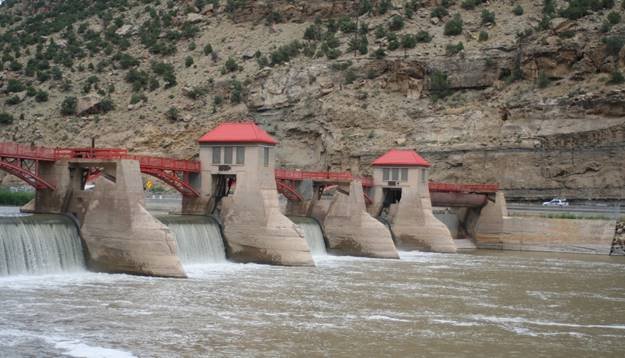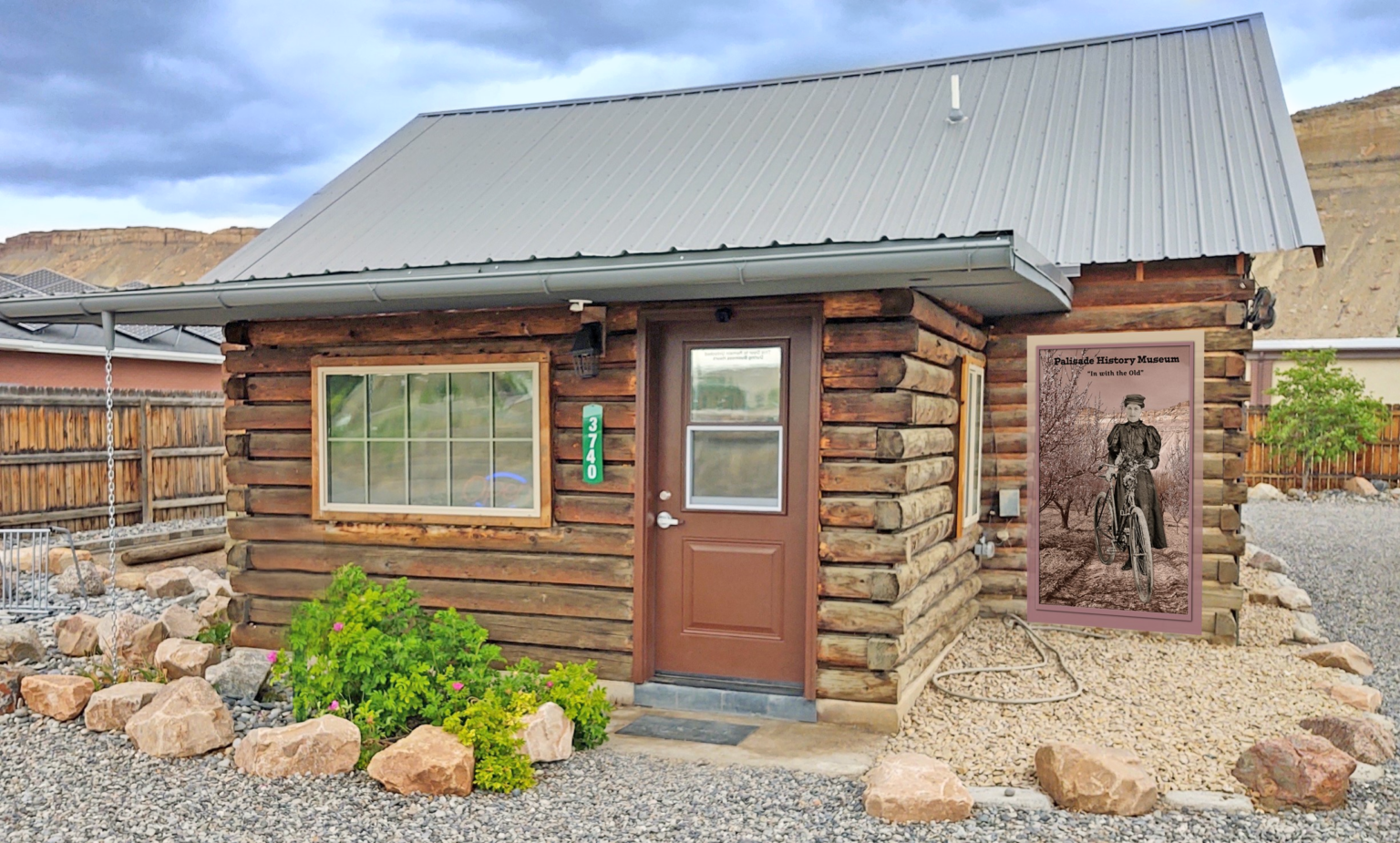History of Palisade
The first inhabitants of the Grand Valley were Ute Indians. After Western Colorado was open to white settlement, fruit orchards were established. The first settler in the Palisade area was J.P. Harlow who raised fruit and vegetables on his ranch on Rapid Creek beginning in 1882. W.A. Pease is credited as the first settler in Palisade. In 1884, he homesteaded 160 acres that came to be the south and west parts of Palisade.
Proximity to water is important for growing crops in this arid land. Harlow diverted water from Rapid Creek into the Grapevine Ditch and the Crawford Ditch for his crops. Other ranchers hauled water in barrels from the Grand River and began to explore how to build irrigation systems to water their orchards effectively.
Early peach growers soon learned frost protection from the palisades, and the early morning “million dollar” katabatic winds from DeBeque Canyon, meant orchards near Palisade more consistently survived spring frosts. This is why most of Mesa County’s 2,200 acres of peaches are east of Mount Garfield.
Named for its dramatic steep cliffs of Mancos Shale bordering the valley, Palisade’s early economy also benefitted from the abundance of valuable low-sulfur bituminous coal.
An Agricultural Haven
Early settlers knew if water could be successfully diverted from the Grand River, which was renamed the Colorado River in 1921, Palisade could be transformed from a barren desert to the bountiful land of orchards and vineyards we have today.
A series of diversion dams and canals were constructed. The earliest, the Grand Valley Canal diversion dam, was built south of town in 1883; however, it did not serve the rich agricultural lands around Palisade. Subsequent irrigation projects have made Palisade one of the most productive agricultural regions in Colorado and the Intermountain West.
An abundance of coal
Coal mining began here in 1884 when George Smith opened the Bookcliff Coal Mine west of Mt. Garfield. Eventually, more than a dozen coal mines operated around Palisade, which also contributed to Palisade’s early economy. Just three miles east of Palisade, in 1899, George Smith discovered the vein of coal in DeBeque Canyon that resulted in the Cameo Mine. It was the largest coal mine in the area and later provided coal for the Public Service Company power plant built in Cameo in 1957. This power plant provided electricity to the region until 2010. No longer a coal mining town or a power plant, Cameo is now the site of a Colorado Division of Parks and Wildlife shooting range known as the Cameo Shooting and Education Complex.
Grand River Diversion Dam
In 1915, the Grand River Diversion Dam was completed. It is a German roller crest design that diverts river water into the Government Highline Canal, supplying five irrigation canals throughout the Grand Valley. Work on this project began in 1897. This “Roller Dam” stands 14 feet high and 546 feet long and when it was built, it was the largest roller dam in the world. Five of the six 70-foot metal cylinders or “rollers” move up and down to keep the water level constant so the railroad tracks–which have been in place on the west side of the River since 1890–are not flooded. The Government Highline Canal is 55 miles long and provides irrigation water to about 33,000 acres stretching from Palisade west to Mack.
You can learn more about Palisade’s irrigation history and the Roller Dam’s 100th birthday party, held June 29, 2015, here.
Learn more about early settlers, the history of Palisade businesses, agriculture, and unique local stories when you take a guided walking tour with the Palisade Historical Society. Choose from three routes in downtown Palisade. Or pick up a self-guided brochure at the Chamber office or the brochure racks in downtown Palisade as a Kindle ebook available from Amazon. Or visit the Historical Society’s website.
Choose from a variety of guided Historical Tour options:
The Palisade Historical Society works with multiple tour operators to provide historical tours. This allows visitors to explore the scenic beauty of the valley while relaxing and learning about the area's early settlers.
Explore the orchards and vinelands near Palisade in horse-drawn wagons for guided scenic tours from J.R’s Carriage and Clark’s Orchard.
Sprockets provides historic information about Palisade in their one-of-a-kind Segway tours.
Pali-Tours offers unique, 2 ½ hour History Tours with volunteers from the Palisade Historical Society sharing photos and history over an adventurous route in a 1975 Pinzgauer 6×6.
Palisade History Museum at the Bunte Shop – 3740 G Road on Highway 6
The Palisade Historical Society has secured a home for Palisade’s first History Museum by renovating the pre-1939 log structure built by George Bunte, Jr. for his Grand Junction Palisade Freight business. It has a variety of interesting Palisade history. Visit the Historical Society’s website for more information and museum hours.





